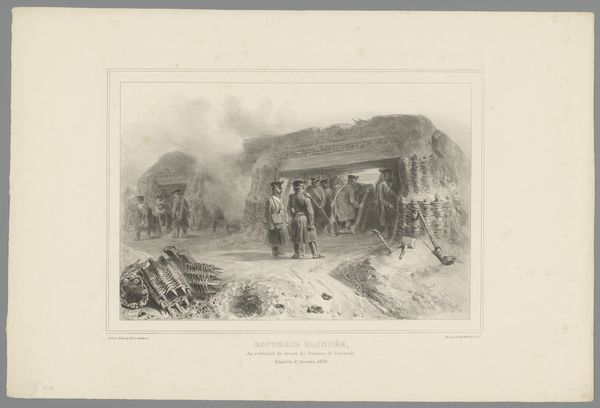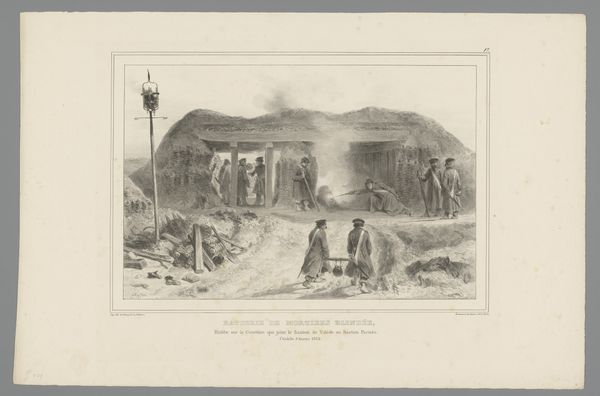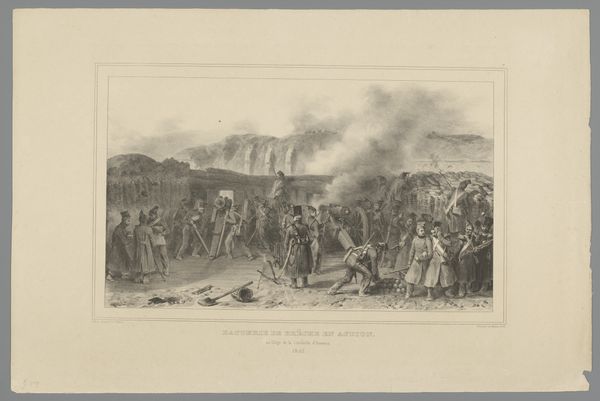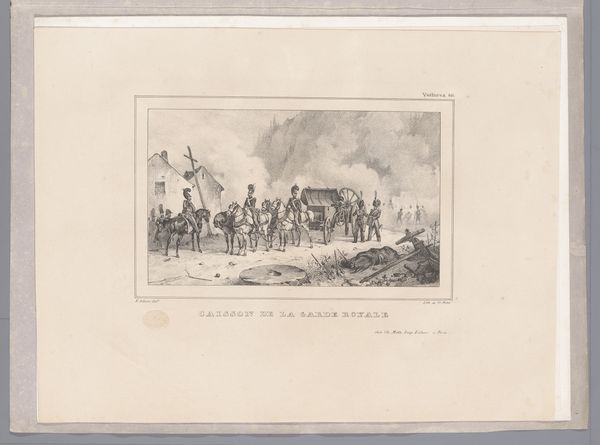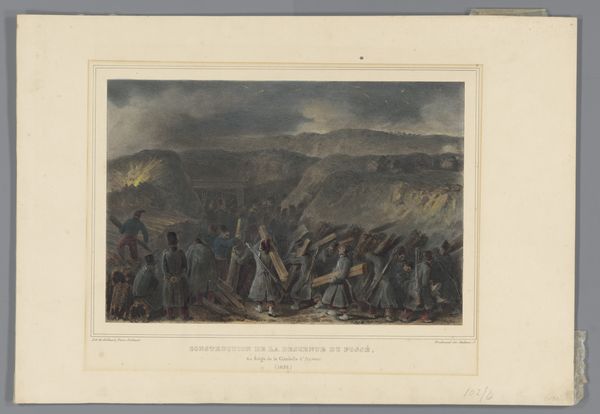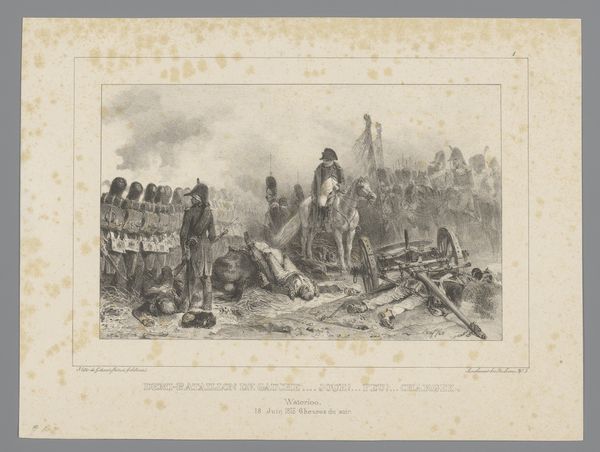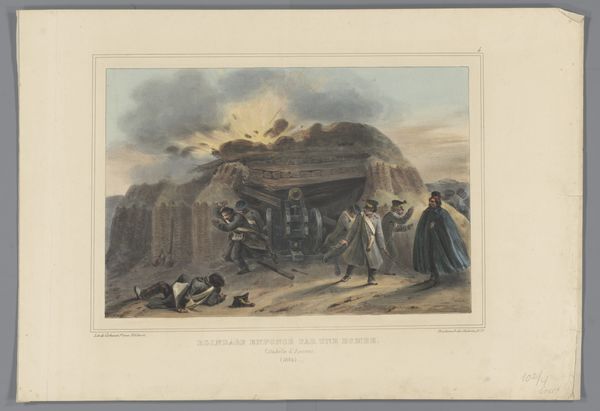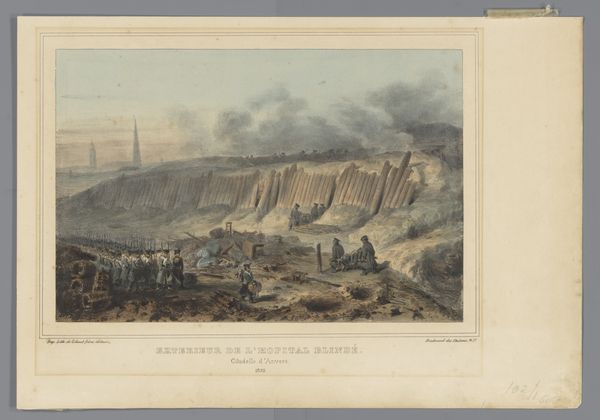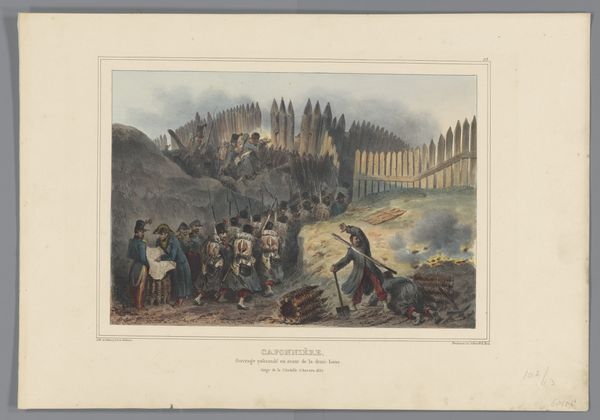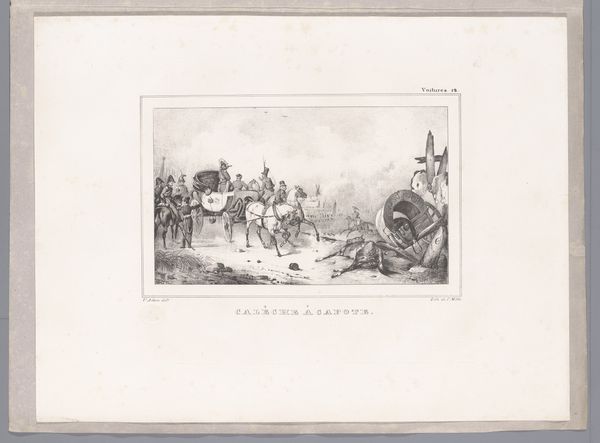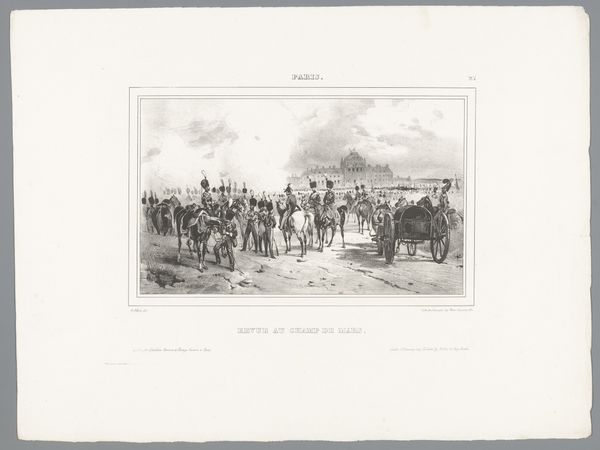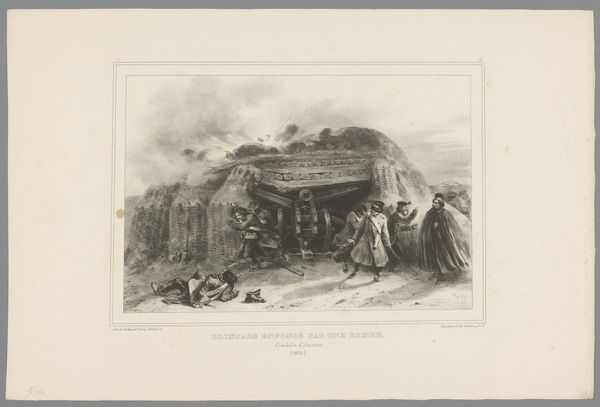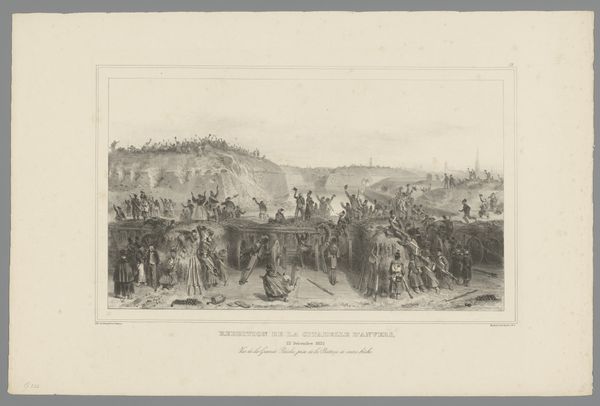
drawing, coloured-pencil, print, paper, ink, pencil
#
drawing
#
coloured-pencil
#
narrative-art
# print
#
landscape
#
paper
#
ink
#
coloured pencil
#
romanticism
#
pencil
#
history-painting
Dimensions: height 326 mm, width 502 mm
Copyright: Rijks Museum: Open Domain
Curator: Here we have Auguste Raffet's "Ingegraven kanon, 1832," dating from 1833. Raffet worked with colored pencil, ink, and pencil on paper for this print now held at the Rijksmuseum. Editor: Right off, it evokes this strangely melancholic feel. The palette is muted, almost sepia-toned, and it all looks like it’s fading away right before my eyes. Like a forgotten dream. Curator: It’s a historical depiction, of course, likely romanticized given the period. Raffet was deeply interested in Napoleonic imagery, though here he's showing military personnel during what appears to be a quiet moment at a bunker or defensive fortification. It has strong narrative art elements. Editor: Yes! There is definitely a storytelling vibe—but I don’t think this necessarily portrays any military triumph. I almost sense a subdued defiance here. Look at how the landscape envelops the structure itself, like the earth trying to reclaim what's hers. And the plume of smoke... ghostly! Curator: Precisely! Raffet understood how to subtly convey complex socio-political feelings in imagery. While initially serving as an apprentice to a wood engraver, he eventually sought higher art aspirations and his Romanticist-era imagery found significant patronage due to its accessible style which still tackled serious national events and feelings. Editor: Those figures though, inside that almost primitive structure—it makes you wonder about their lives, their individual sacrifices… Like figures in an earthwork! It's as if they were caught between the past and some future battle. It sparks all kinds of reflection! Curator: Absolutely. He masterfully situates those individual soldiers within a larger historical framework, a tension he sustains by portraying them through landscape painting conventions as well. I find that very powerful. Editor: Well, for me, it whispers questions of endurance. Makes you contemplate: What remnants do wars actually leave us with? Is it ruins, or maybe a collective heartache, smoldering even under the brightest of skies? Curator: Indeed. This has me looking into Raffet’s biography again. I'm newly struck by its continued power to spark such intimate conversations with history.
Comments
No comments
Be the first to comment and join the conversation on the ultimate creative platform.
